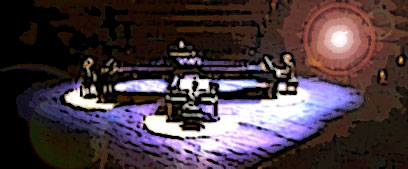
The Learning Circuit's big question -- For a given project, how do you determine if, when and how much an instructional designer and instructional design is needed?
The quick answer is "it depends." However, I think it goes a little deeper than that.
Everyone designs who devises courses of action aimed at changing existing situations into preferred ones. - Herbert Simon (Nobel Prize Winner & Carnegie Mellon professor)
Simon went on to argue that design brings forth what does not come naturally. While science is concerned more with how things are, design, on the other hand, is concerned with how things ought to be. So what gives Instructional Designers their worth? It has often been argued that instruction is both art and science, thus we are perhaps more closely related to the crafts.At work, the potter sits before a lump of clay on the wheel. Her mind is on the clay, but she is also aware of sitting between her past experiences and her future prospects. She knows exactly what has and has not worked for her in the past. She has an intimate knowledge of her work, her capabilities, and her markets. As a crafts[person], she senses rather than analyzes these things; her knowledge is 'tacit.' All these things are working in her mind as her hands are working the clay. The product that emerges on the wheel is likely to be in the tradition of her past work, but she may break away and embark on a new direction. Even so, the past is no less present, projecting itself into the future. - Henry Mintzberg, "Crafting Strategy", Harvard Business Review, July-August 1987, pp. 66-75.
Like a potter, an experienced Instructional Designer brings forth her past experience to a future conception. This allows her to view a certain aspect of our world so that we may make sense of it, and in turn, create possibilities within others. However, unlike the potter who works with inanimate materials, we deal with a network composed of over ten billion semi-independent neurons that seem to be randomly connected to each other -- the human brain. And the way that we are able to make some sense of this extremely complex network is by chunking it on higher and higher levels. These chunks or patterns provide us with concepts on how people best learn -- they are the science behind our profession. Yet with each step or concept that we create, some precision is lost.For example, an Instructional Designer might be able to say with confidence that studies show that a 4:1 student to instructor ratio is best when instructing heavy equipment. Yet, it is all about context -- her past experience might also tell her that in particular situation that since the equipment has few safeguards and the learners have little or no experience, a 2:1 ratio would bring about the best possibility for learning. A different situation might tell her that a 8:1 ratio would be not only effective but also more efficient.
Science also tells us that while the brain is a complex network, it is somewhat limited as an information processing system. It can only process about seven chunks of information at a time and it takes about five seconds to transfer one chunk of information from short-term memory to long-term memory. And often, this has to be done repeatedly.
While this can be accomplished with rote memorization, learners can become extremely bored with this method. In addition, it is has little or no context, thus rote memorization can be limited in nature when taken out of the classroom and put to use on the job. Thus, our designs must become more like a composer's fugue in that we base learning on one theme or concept, yet is played (learned) on different voices (interactions), keys (activities), speeds (spacing), directions, and emotional levels.
Dutch composer Simeon ten Holt wrote Canto Ostinato (mp3 music file) for various instruments and flexible duration. Ten Holt uses repetition and minimalist permutations to create an original, evolving work with ever-shifting moments. These parts are woven together into an overlapping and flowing whole.

What happens on-stage is like you're looking at an object from different angles, and the object is changed by the input people put into it. If you look at an object from above or below, it's still the same object, but the colours are different, the shapes are different, and that's what happens on-stage. So the players' input is very important. - Simeon ten Holt
So not only do our learning designs need to be like fugues, but also like Simeon ten Holt's composition in that the learning experience not only allows the players (learners) to reach the objectives set by the composer (designer) by being able to view them from different angles in order to meet their styles and preferences, but also flexible enough to allow them to meet their own objectives.Science gives us a large part of our declarative or explicit knowledge that allows us to map and plan our course of action for best creating learning, for example:

Yet our experience, knowledge, and skills gives us our procedural or tacit knowledge that is spread widely around our brain. This is our real worth as instructional designers. It tells us when a project is basic enough to pass on to SMEs through the use of templates or when to keep a project in the hands of instructional designers because of the uniqueness of it. The tacit knowledge that we develop within ourselves over the years allows us to view each learning situation as a unique project with many variables to account for so that the best possibility of learning occurs.

1 comment:
Excellent post Donald. In fact, the only answer to The Big Question that for me gets to the crux of the issue of the value of ID. I couldn't agree more. Reminds me of an article by Don Morrison, which also tackled the 'art/craft' of ID.
You might be interested in my article on the value of design in ID:
http://www.elearningpost.com/articles/archives/learning_by_design/
Also my thoughts on educating ID people:
http://duskanddawn.blogspot.com/2003/10/education-of-learning-designer.html
Best wishes,
Mindful (I miss you as a competitor!)
Post a Comment